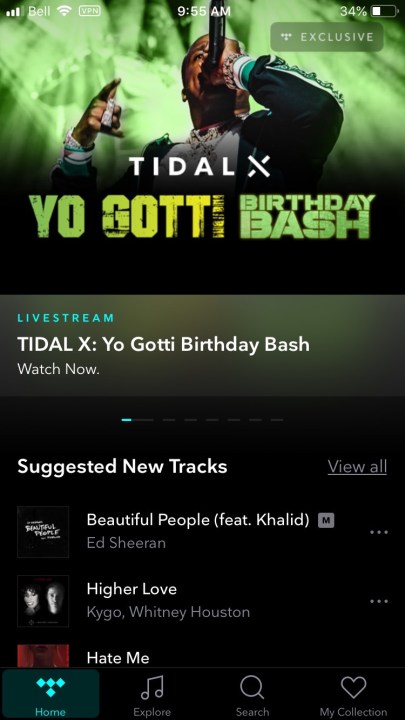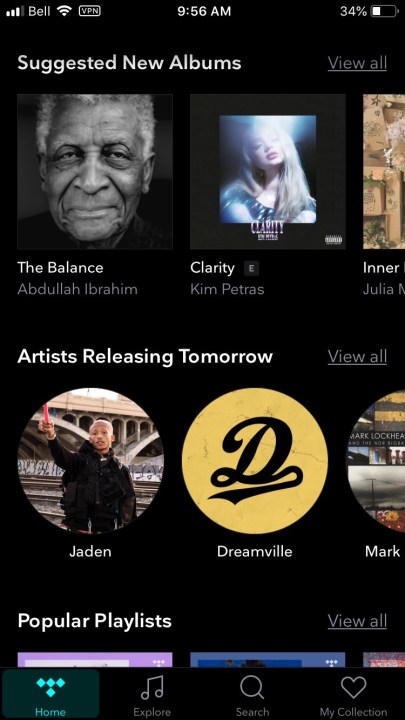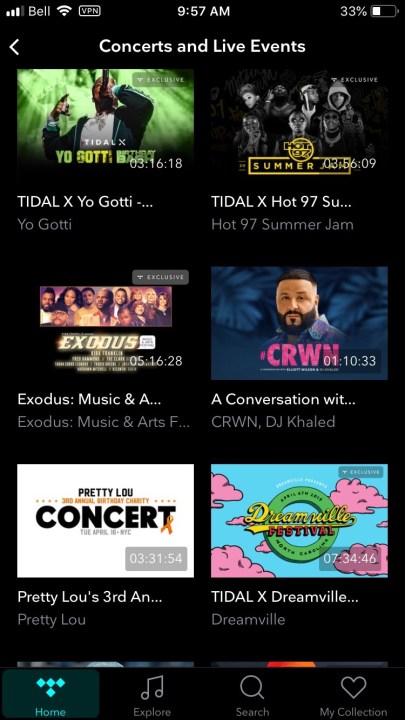Most big-name music streaming services have a lot in common. Apple Music, Spotify, Amazon Music, Pandora, and YouTube Music all have similar choices in music and quality — it’s just a matter of picking your preferred platform.
Tidal, on the other hand, breaks the mold. The business structure emphasizes the artists having more control over the platform, and it offers higher-quality audio in comparison to the big names. We have all the details on how this service works so you can decide if it’s right for you.
What is Tidal?

Tidal is a music streaming subscription service with a catalog of tens of millions of songs, which includes exclusives. It also has a variety of podcasts, music videos, live concert recordings, and professionally curated playlists. As with most streaming services, it’s accessible on a wide variety of devices, including computers, smartphones, tablets, smart speakers, and platforms like Apple TV and Android TV. However, Tidal has a couple of different focuses that help it stand apart.
Tidal was originally owned by a group of musicians, including Alicia Keys, Beyoncé, Jack White, Kanye, Madonna, Rihanna, Daft Punk, Chris Martin of Coldplay, and others. In 2021, Square purchased Tidal for around $300 million, ending this artist-based ownership, although its influence still remains. Tidal is a very artist-friendly platform compared to other options, and for paid subscriptions, a portion of up to 10% of the subscription is specifically directed toward your most-listened artists in addition to their royalties.
Second, in addition to its free tier for streaming up to 160Kbps, Tidal has more expensive HiFi and HiFi Plus options that bumps up the entire catalog to lossless, CD-quality audio, and a limited catalog of hi-res music, including Hifi and Master, as well as Tidal’s own Master Quality formatting available with the HiFi Plus plan. It also supports Dolby Atmos and Sony’s 360 Reality audio for spatial audio properties. While other services have started to include lossless audio and similar benefits, Tidal still offers the best audio quality for casual listening without paying fees (more on this below)
How much does Tidal cost, and what’s included?
When Tidal first started, it did not include a free version like Spotify and some others offer. The only way to access content was to pay for a plan. In 2021, Tidal changed this approach, offering a free version of its music service with occasional ads (currently, Tidal doesn’t have third-party ads, just reminders to sign up for a plan). But if you are interested in upgrading to a subscription, these are the available plans:
HiFi — $10.99 per month: This removes ads while allowing for 1411Kbps sound quality.
HiFi Plus — $19.99 per month: This adds lossless High Fidelity and Master Quality Authenticated (MQA) support, along with Dolby Atmos and 360 Reality Audio support.
Family HiFi — $16.99 per month: This version allows for up to six different people on the same account but limits audio to standard sound quality.
Family HiFi Plus — $29.99 per month: Here, you get support for six different profiles, plus all the lossless and high-quality format support from the previous plans.
Tidal also offers a number of discounted plans. That includes 50% discounts for students, military discounts, and first responder discounts.
How does Tidal Masters work?
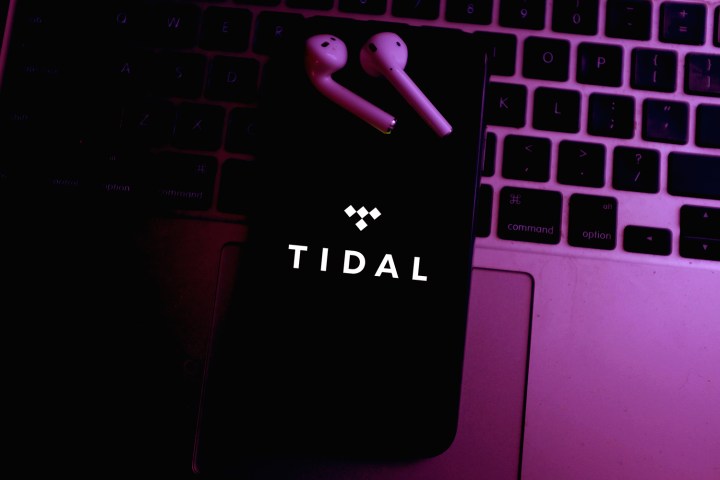
Tidal Masters is a collection of tracks that can be streamed in hi-res audio using the MQA codec. Fans of MQA argue that the format is superior to FLAC because the quality is determined by the record label, not the streaming service, and because it employs a type of compression they feel improves the sound quality of digital music. It supports up to 24-bit/96kHz file sizes, but with compression technology that doesn’t take up any more bandwidth than a CD audio file would. That makes it much easier to stream hi-res audio without worrying about eating into bandwidth or reaching data caps, which can be an issue with other services like Amazon Music HD.
To listen to Tidal Masters at full quality, though, you need a device and software that supports the MQA format. The Tidal app for iOS, Android, and desktop operating systems is an easy way to get started, but for a true audiophile experience, you’re better off looking to a third-party audio system that’s compatible with Tidal/MQA, like BlueSound, Meridian, or Roon.
Keep in mind, true hi-res audio quality is very much dependent on the last pieces of the audio delivery chain, namely the digital-to-analog converter (DAC), the amplifier, and the speakers/headphones. If any of these elements aren’t high-quality or are not compatible with hi-res audio, you won’t get the full hi-res experience.
What is Dolby Atmos Music?
Dolby Atmos Music is the same object-based audio system used in cinemas and home theaters to create incredibly immersive sound experiences, but it’s been adapted for studio-recorded and live music.
Dolby Atmos is not available on all songs, but if you have a HiFi Plus subscription, you can access the format wherever it is available. With the right plan, you should be able to find suggested Dolby Atmos content in the Explore tab when logged in. To hear Dolby Atmos Music tracks at their full quality, you need an Atmos-compatible streaming device, such as an Apple TV 4K, Amazon Fire TV devices, Nvidia Shield and Shield Pro, or Chromecast with Google TV, and an Atmos-compatible A/V receiver, TV, soundbar, or wireless speaker.
Can I buy music through Tidal?
Tidal used to have a download store where you could purchase and download music permanently. However, Tidal closed its store in October 2022. Those who have purchased music through the service are advised to download their purchased songs on whatever device they prefer before January 23, 2023.
Which speakers, devices, and software work with Tidal?
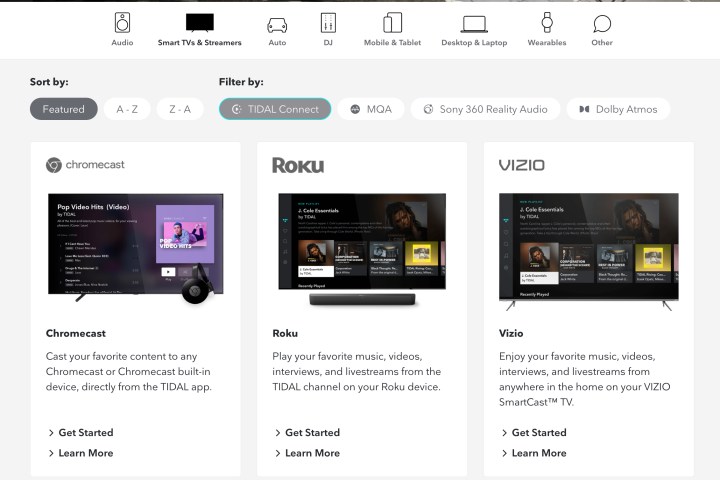
With an active Tidal subscription, you have lots of choices when it comes to listening to or watching Tidal content.
Tidal provides its own software for use on:
- iOS devices and Apple Watch
- Android devices
- Roku devices
- Vizio Devices
- Macs and PCs
- Apple TV
- Android/Google TV
- Amazon Fire TV
- Samsung Smart TVs (2017 and newer)
- Samsung Gear watches
There’s extensive support for the Tidal music service on third-party sound systems, like Sonos, Denon HEOS, BlueSound, Yamaha MusicCast, and many more. Within the dedicated apps for these systems, Tidal can be added as a streaming music source using your Tidal account login email and password.
You can also integrate Tidal content into popular media player/server software, like Plex and Roon, plus there’s a Tidal add-on for Kodi and lots of other software.
In October 2020, Tidal announced Tidal Connect, a new way of casting Tidal audio to compatible wireless speakers. Using the Tidal app as a controller, you can select a specific speaker for playback and send it the highest-quality stream possible, whether it’s lossless FLAC, MQA, or even Dolby Atmos. Tidal Connect is similar to using Chromecast or AirPlay, but these casting protocols do not support Connect’s higher-quality audio streams. Here’s a look at the devices that currently support Tidal Connect.
Then there is voice assistant compatibility to play music on Tidal via a voice command, which is a bit more limited. Tidal has added support for both Alexa and Google Assistant in past years, but Siri support is limited. While Tidal works with Siri on iPhones, the only way to play Tidal on Apple’s HomePod Mini is via AirPlay from your iOS device. The same is true for Google’s Home line of smart speakers — you can cast Tidal to them from a mobile app, but there’s no native support for Tidal, so you won’t be able to say, “Hey Google, play Nipsey Hussle on Tidal.”
On Sonos smart speakers, such as the Sonos One 2nd-generation or the Sonos Ray soundbar, both Alexa Google Assistant voice assistants are supported. However, as we pointed out, you cannot add Tidal directly to Google Assistant, only to the Sonos app, which can then be controlled by Google Assistant.
Tidal extras
Beyond its extensive music catalog, Tidal also offers some noteworthy extra features.
Playlists
You can create, edit, and delete your own playlists from Tidal tracks. Using either Tune My Music or Soundiiz, you can import your playlists from other music services like Apple Music, Spotify, Pandora, Soundcloud, YouTube, Google Play Music, and more. Tidal also publishes and maintains its own collection of playlists organized by mood and genre. Moods are often activity-oriented, like driving, focus, relax, or party, while genres are the more traditional categories like dance, metal, jazz, and rap.
If you want a playlist created for you, Tidal’s My Mix feature uses an algorithm to build playlists based on the kind of music that you like. You’ll need to listen to music for a while so that My Mix can get an accurate read, but otherwise, it’s very effective at building instant playlists and making new suggestions. While Tidal used to provide playlists curated by experts like Jay-Z, this effort has dwindled in recent years, although you can find older curated lists from a variety of artists.
Tidal Magazine
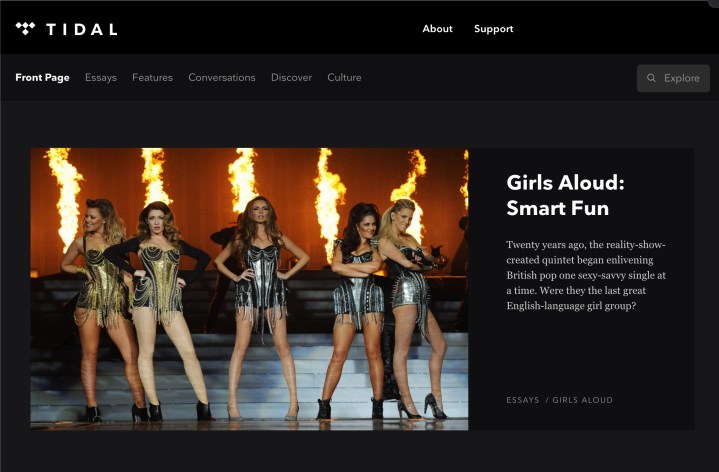
Just as impressive as the human-curated playlists are Tidal’s collection of articles and interviews found in its Magazine section. These range from album reviews like Patterson Hood’s take on Bruce Springsteen’s Western Stars to Alan Light’s deep dive into the forces that shaped Prince’s obsession with perfection. These aren’t just hot takes on the latest trends — they’re considered posts by those who know music best: musicians, producers, and expert journalists.
Podcasts
While Tidal’s collection of podcasts doesn’t match that of Spotify or other platforms, it does have an eclectic library with a variety of topics, especially podcasts that examine new music or books and interview artists and authors.
Videos
Speaking of videos, this is one area where Tidal really shines. With over 450,000 music videos, live concert recordings, and special shows like In Praise of Prince, Rough Draft, and Fresh Cuts, it’s worth downloading the Tidal app to a video device like Apple TV or Android TV so you can experience these videos on the big screen. However, videos are not available on the free version of the service — you’ll need to pay for a subscription to access them. You can also get access to livestreaming concerts thanks to Tidal Rising, which spotlights rising artists via a partnership with Horizon Worlds, a Meta virtual venue project.
Early Access
In 2022 Tidal also announced an Early Access program available only to its HiFi Plus subscribers on iPhone and (eventually) Android. This program is currently available on the TestFlight app. This is a new way to try beta features coming to Tidal in the future, including the ability to provide feedback on the experience.
Editors' Recommendations
- What is Deezer? Features, pricing, and music quality explained
- How much is Apple Music, and how can you get it for free?
- Best network music streamers 2023: make your hi-fi smarter
- What is Spotify? Music, pricing, and features explained
- What is MQA? The controversial digital audio format fully explained


